
11. sınıflar Görsel tasarımlarda gRafik tasarımlar için gerekli olması gereken programlar
- Subject:
- Visual Arts
- Material Type:
- Lesson Plan
- Author:
- Melih Gemci
- Date Added:
- 06/27/2021

11. sınıflar Görsel tasarımlarda gRafik tasarımlar için gerekli olması gereken programlar

In this Wonder of the DayR, we learn about why flamingos are pink. Students have the opportunity to explore the Wonder either as a class or individually. With suggestions for different age groups, Wonder #1 has an activity to engage students with drawing, writing description, or both.

, We will learn about why flamingos are pink. Students have the opportunity to explore as a class or individually. With suggestions for different age groups. This resource has some activities to engage students with drawing, writing descriptions, or both.

In this Wonder of the DayR, we learn about why flamingos are pink. Students have the opportunity to explore the Wonder either as a class or individually. With suggestions for different age groups, Wonder #1 has an activity to engage students with drawing, writing description, or both.
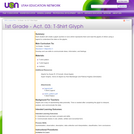
In this lesson each student will create a glyph (symbol or icon) which represents them and read the glyphs of others using a legend to understand the data on the glyphs.
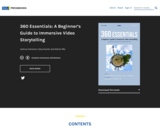
Our objective with this resource is to walk you through the essential steps in creating compelling and engaging 360 video experiences. While some prior experience with photography or videography can help, the technology available now gives anybody the ability to produce this type of amazing content.
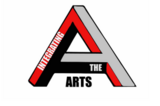
This resource was created by Heidi Meyers, in collaboration with Dawn DeTurk, Hannah Blomstedt, and Julie Albrecht, as part of ESU2's Integrating the Arts project. This project is a four year initiative focused on integrating arts into the core curriculum through teacher education, practice, and coaching.
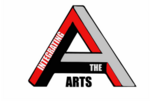
This resource was created by Judy Prewett, in collaboration with Dawn DeTurk, Hannah Blomstedt, and Julie Albrecht, as part of ESU2's Integrating the Arts project. This project is a four year initiative focused on integrating arts into the core curriculum through teacher education, practice, and coaching.

For the 75th anniversary of the Golden Gate Bridge, artist Stephanie Syjuco created an expansive shop of souvenirs produced in a monochrome palette: the memorable orange hue of the Golden Gate Bridge. Working with the same paint used to keep the bridge looking fresh, Syjuco's installation features all things reddish-orange: teacups, jewelry, postcards and tchotchkes that are surprisingly not for sale, but presented together as a conceptual art installation. This video offers a behind-the-scenes look at Syjuco’s collaborative process.

Lesson PlanDate: 1/16/18 Grade Level: 8Concept: Color Wheel Objectives:Students will demonstrate knowledge of color wheel in pairs by receiving 10/10 points on an assignment at the end of lesson.Introduction: Utilize prior knowledge of primary and secondary colors to incorporate new concepts of complementary colors. Motivational Device- Red dot on white board, introduction to complementary colorsVocabulary: Primary, secondary, complementary, cool and warm colors, and ROY G BIV.Body of Lesson: Ask student’s favorite color to transition into previous knowledge primary and secondary colors. Relate favorite colors or colors around the room to the color wheel and explain primary and secondary color relationships. Use red dot optical illusion to introduce complementary colors (motivational device). Introduce color wheel assignment (worksheet). Accommodations/Modifications: ADHD- Allow student(s) to stand or sit on exercise ball while working. Multiple Intelligence(s) Addressed: Linguistic- Provide alternate activity.Assessment: Color wheel assignment. Materials: Red paper, colored pencils, color wheel example, blank assessment Standards: HSE.MS.8.18- Understand Color Theory
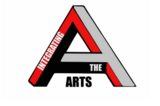
This resource was created by Rebecca Kerber, in collaboration with Dawn DeTurk, Hannah Blomstedt, and Julie Albrecht, as part of ESU2's Integrating the Arts project. This project is a four year initiative focused on integrating arts into the core curriculum through teacher education, practice, and coaching.

Develop a passion for visual communication and learn new skills! In Two-Dimensional Design students of all abilities will master the fundamentals of visual composition, and the various ways artists and designers use visual language. Through the study of the elements and principals of design students will develop technical proficiency in a range of art media and find creative confidence in the expression of visual communication. This course approach fosters creativity through one-one-one instruction during time, written feedback, and group critiques.

Develop a passion for visual communication and learn new skills! In Three-Dimensional Design students of all abilities will master the fundamentals of visual composition, and the various ways artists and designers use visual language. Through the study of the elements and principals of design students will develop technical proficiency in a range of art media and find creative confidence in the expression of visual communication. This course approach fosters creativity through one-one-one instruction during time, written feedback, and group critiques.
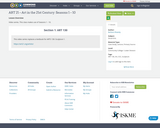
Video series. This class makes use of Seasons 1 - 10.
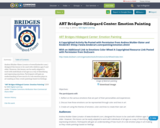
Andrea Mulder-Slater (creator of www.KinderArt.com ) designed this lesson to be
used with children ages 5 and older. However, this lesson can be easily adapted to
work with individuals of all ages as a way of identifying and expressing emotions.
Participants will gain an understanding of how much of a role emotion plays in
art-making as they create paintings based on feelings.
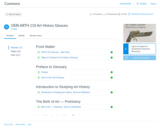
“This glossary contains over 250 key terms and is illustrated with more than 100 images. A few of the key terms are repeated to give a different context to the term with each use. In such cases, a different illustration may be used, in keeping with the culture and time period under which the key term is listed. This resource can be used digitally, as a series of webpages (on Canvas, for example) or as a PDF of this entire glossary that is made available on certain platforms. As a series of webpages, the book is organized in modules. The PDF, when available, can also be printed into a hard copy of the entire glossary. The structure of this glossary follows art historical periods culturally. When viewing this glossary as a series of webpages, each of the topics listed under Table of Contents (see previous page) is contained on its own page. The length of each page varies a great deal due to the arbitrary “length” of a webpage. All image captions, as well as their attributions and licenses, are listed at the bottom of each page.”

Aboriginal Hand Print
(art + history; art + social studies)
"One old man in Arnhem Land remembered being carried as a child on his father's shoulders as his father climbed up a log leaning against a rock wall. His father then sprayed his hand with red ochre against the rock, leaving a stencil he could still recognize many years later. The main function of the stencils was to record people's presence and association with a site." — Aboriginal Art Online
The stenciled hand print and aboriginal style drawings help children to relate to the man from the Australian Aboriginal Culture stated above, while helping them to understand the use of line in art. A black paper with white splattered paint was used, but white paper with red (ochre) splattered paint would make a nice impression also. Construction paper crayons make bright, bold, linear designs around the hand stencil.
Grade Levels K-4

Art can be found in everything, even ordinary objects. Artist David Huffman finds that abstraction is a great way to delve into the meaning and symbolism of everyday objects, like a basketball or a shoe. Find your own inspiration and create some abstract art -- it might have more meaning than you might think!
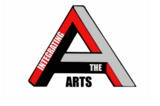
This resource was created by Maelynn Liewer, in collaboration with Dawn DeTurk, Hannah Blomstedt, and Julie Albrecht, as part of ESU2's Integrating the Arts project. This project is a four year initiative focused on integrating arts into the core curriculum through teacher education, practice, and coaching.
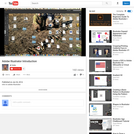
Setup of Adobe Illustrator and page setup including page settings, grid settings, rulers, setting origin points, tools and other items necessary to set up an Illustrator document.
5:14 minutes long.